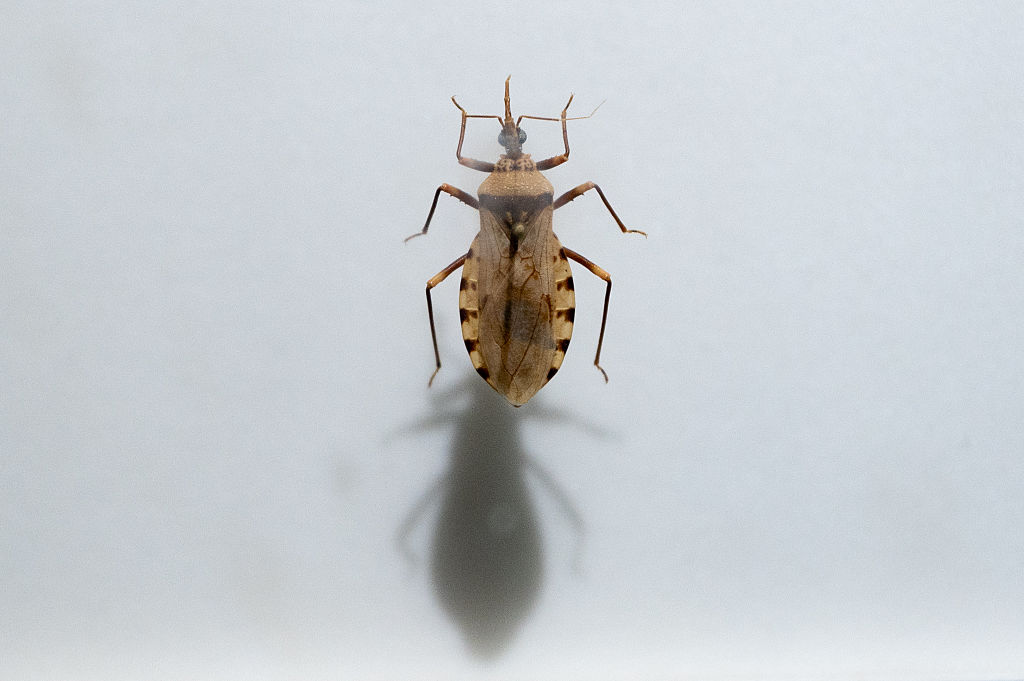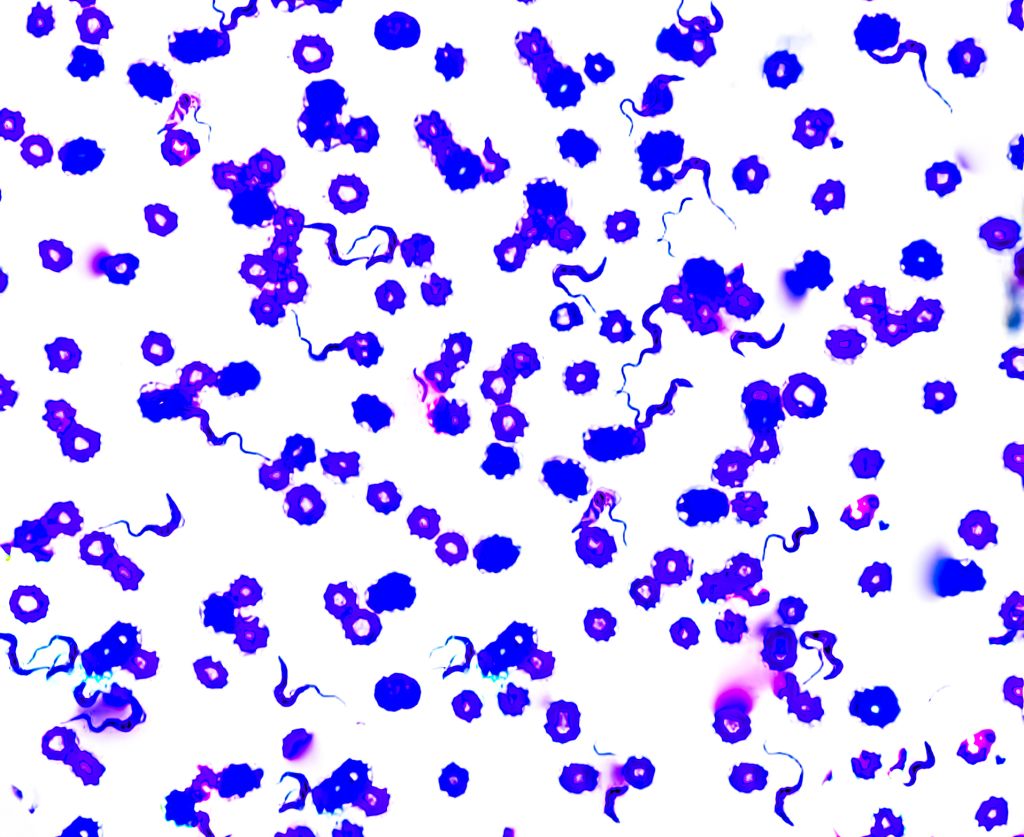What To Know About Deadly Kissing Bugs And Chagas Disease
Chagas Disease Is Spreading In The US—Here’s What’s Behind It

Chagas disease is an often-overlooked but potentially life-threatening illness caused by the parasite Trypanosoma cruzi. New warnings about Chagas disease are being issued by officials from the Centers for Disease Control and Prevention (CDC). Once thought to be limited primarily to rural regions of Latin America, Chagas disease is now gaining attention as an emerging health threat within the United States, especially in southern states like Texas. The CDC is urging healthcare providers and public health authorities to recognize that the disease may be more endemic to the U.S. than previously believed.
What is Chagas disease?
Chagas disease is transmitted primarily through the feces of infected triatomine bugs, commonly known as “kissing bugs.” These bugs tend to bite around the face at night and leave behind parasite-containing feces, which can enter the body through the bite wound or mucous membranes, such as the eyes or mouth. The disease is not spread by person-to-person contact and cannot be contracted through casual interactions. However, it can be transmitted through other means, such as blood transfusions, organ transplants, from mother to child during pregnancy, and, more rarely, through contaminated food or accidental exposure in a laboratory setting.
Although millions of people in Latin America are living with the disease, estimates suggest that as many as 280,000 people in the United States may also be infected, often without knowing it. Many of these individuals acquired the parasite in their home countries before moving to the U.S., but increasing evidence shows that some are being infected locally. This is particularly true in states where triatomine bugs are found, such as Texas, Arizona, Louisiana, and California.
Texas, in particular, has been a hotbed for the worrying condition. According to a report released by the CDC this month, between 2013 and 2023, the Texas Department of State Health Services “documented 50 probable and confirmed cases that were considered autochthonous,” meaning they were acquired locally rather than imported through travel.

Among those 50 cases, three were diagnosed during the acute phase, 44 during the chronic asymptomatic phase, and three during the chronic symptomatic stage. These infections occurred in individuals who had no travel history to Chagas-endemic areas, suggesting transmission by local insect vectors. Wildlife, companion animals, and particularly dogs in Texas frequently test positive for T. cruzi, heightening the risk of local transmission.
Although there’s not enough standardized data to confirm that kissing bugs are spreading or increasing in number, these dangerous critters are being reported more often due to more frequent encounters with humans, increased research, and rising public awareness, the CDC noted, especially as they invade homes, bite people, trigger allergic reactions, and contribute to more Chagas disease diagnoses in dogs. The health agency believes that more public awareness and education should be made available to keep Americans safe, as cases continue to grow.
“Labeling the United States as non–Chagas disease–endemic perpetuates low awareness and underreporting,” the report noted. “We propose that Chagas disease in the United States be classified as endemic and, more specifically, hypoendemic, acknowledging its presence and effects while emphasizing the need for heightened awareness and surveillance.”
The agency added, “We recognize the burden of locally acquired human disease in the United States does not approach the levels seen in some regions of Latin America, but hope that labeling the United States as Chagas disease–endemic will also raise awareness for this neglected disease across its endemic range.”
What are the symptoms of Chagas disease?
Chagas disease progresses in two stages: acute and chronic. The acute phase occurs shortly after infection and may last for several weeks or months. During this time, symptoms are often mild or absent, making the disease difficult to detect. Some individuals may experience symptoms such as fever, fatigue, body aches, rash, headache, vomiting, or diarrhea. A characteristic sign in some cases is swelling of one eyelid, known as Romaña’s sign, which occurs when the parasite enters through the eye.
After the acute phase, the infection can persist as a chronic condition. Most people in the chronic stage remain asymptomatic for life, but about 20 to 30% will develop serious health problems—often decades after the initial infection. These complications can include heart rhythm abnormalities, an enlarged heart, heart failure, or sudden death. Digestive issues such as an enlarged esophagus or colon may also occur, leading to difficulty swallowing or severe constipation.
Outside of Texas, where has Chagas disease been detected?
While the United States is not officially considered an endemic country, the growing presence of the parasite in local kissing bugs, domestic animals, and wildlife is challenging that classification. Between 2000 and 2018, researchers identified 29 confirmed and 47 suspected cases of locally acquired Chagas disease across eight U.S. states: California, Arizona, Texas, Tennessee, Louisiana, Missouri, Mississippi, and Arkansas. Experts believe these numbers are likely just the tip of the iceberg, as many infections go undiagnosed due to a lack of awareness and limited testing.
The diagnosis of chronic Chagas disease is particularly challenging. CDC guidelines recommend using at least two different serologic tests to detect antibodies, as no single test is accurate enough on its own. Because symptoms can take years to develop, many people are unaware they are infected until serious complications arise.
How can we protect ourselves?
Individuals who have lived in or traveled to rural areas of Latin America—especially those with a family history of Chagas disease or maternal infection- should consider getting tested. The disease can also be passed from an infected mother to her baby during pregnancy, although in most cases, mothers can still safely breastfeed unless there is visible blood or cracked nipples.
Prevention of new infections in the U.S. relies heavily on avoiding contact with infected kissing bugs, which are most active at night and often hide in poorly constructed homes, outdoor sheds, and animal enclosures. Travelers and residents in at-risk areas should stay in well-built housing, use insecticides when necessary, and avoid sleeping outdoors or in structures with visible insect infestations, according to the CDC.
The spread of Chagas disease in the U.S. is a reminder of how global health challenges can emerge in unexpected ways, especially in our increasingly interconnected world. As public health experts call for increased awareness and enhanced surveillance, both medical professionals and the general public need to understand the risks, symptoms, and preventive strategies associated with this neglected tropical disease. Early detection and treatment can make a significant difference, especially before the disease progresses to its chronic and potentially life-threatening stage.
If you or someone in your family has lived in areas at risk or has symptoms consistent with chronic Chagas disease, speak to a healthcare provider about testing. With better awareness and proactive care, the rising threat of Chagas disease can be managed and controlled before it becomes more widespread.
SEE MORE:



